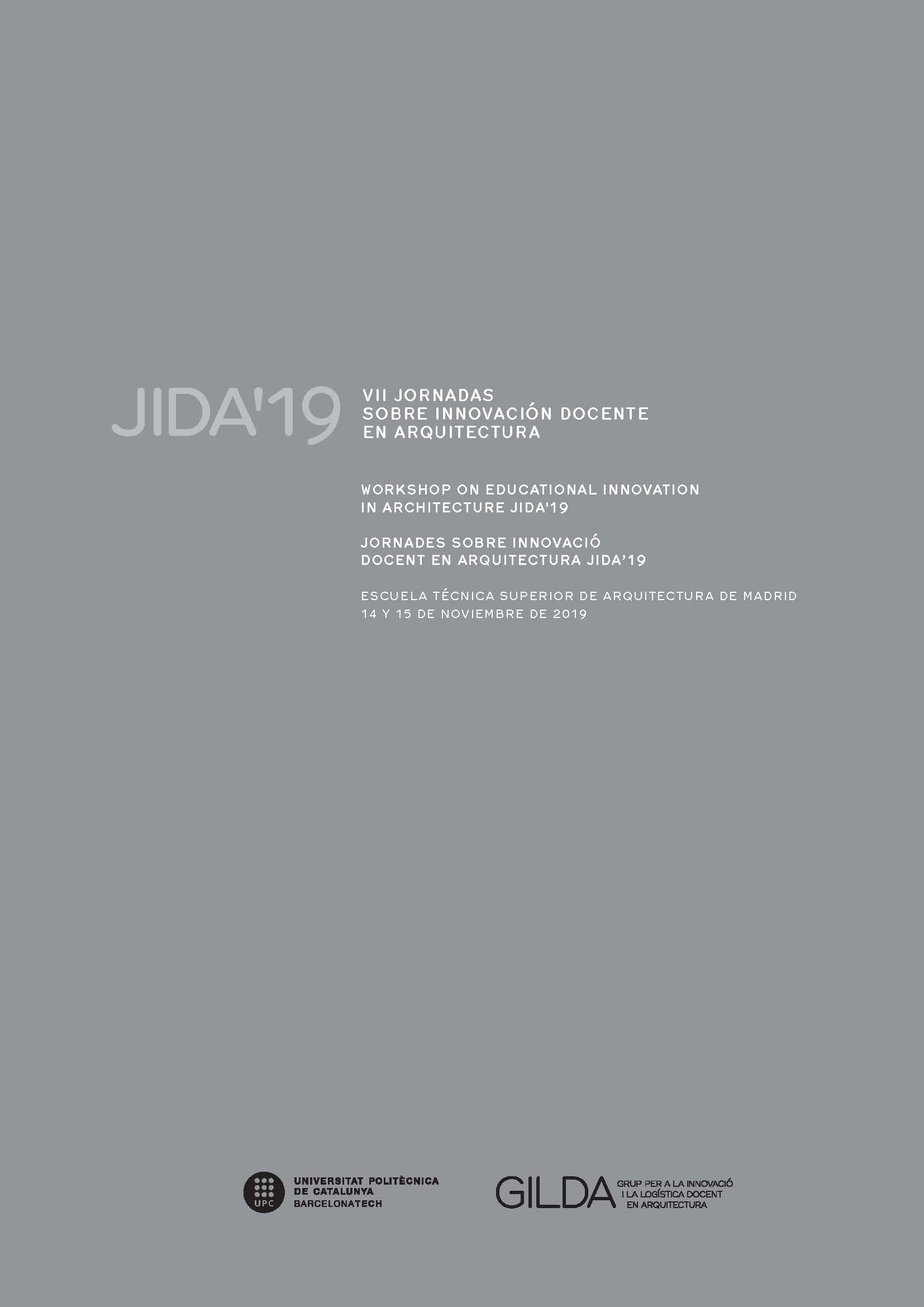Mi taller es el barrio
DOI:
https://doi.org/10.5821/jida.2019.8356Resumen
Mi taller es el barrio propone ubicar el epicentro de la enseñanza en Solanda, un complejo barrio popular de vivienda incremental en Quito. Son varias las estrategias pedagógicas aplicadas en nuestra interrelación con la comunidad. Desde el diseño, hemos hecho uso de herramientas tradicionales (diagnóstico técnico y mapeo sensorial) y otras menos concurrentes: urbanismos tácticos, incluido el despliegue del taller-galería cuya flexibilidad nos permite trabajar colectivamente y exponer lo producido en diversos espacios barriales. Las complejas circunstancias del barrios nos han obligado a expandir nuestras prácticas a métodos pluridisciplinares que nos permitan responder a necesidades relacionadas con reforzamiento estructural, levantamiento de datos y catastro comunitarios (KoBo Toolbox), y eventos organizados bajo el título “El barrio se toma la universidad” que buscan revertir la lógica de la experticia y presentar al barrio como el principal conocedor de sus circunstancias y necesidades, como agente crítico en la proyección urbana del futuro colectivo.Citas
ALZINA, R. B. (2004). MetodologÃa de la investigación educativa (Vol. 1). Editorial La Muralla.
CORBOZ, A. (2004). “El territorio como palimpsesto†en Ramos, Ã. M. Lo urbano en 20 autores contemporáneos (Vol. 7). Barcelona: Universitat Politecnica de Catalunya.
DE TERÃN, L. M. y DEL PINO MARTÃNEZ, I. (2005). Algunas reflexiones sobre el Ecuador prehispánico y la ciudad inca de Quito. Quito: ConsejerÃa de Obras Públicas y Transportes, Dirección General de Arquitectura y Vivienda.
DREISEITL, H. y GRAU, D. (eds.). (2012). New waterscapes: Planning, building and designing with water. Berlin: Walter de Gruyter.
HARDIN, G. (1968). The tragedy of the commons. Science, 162(3859), 1243-1248.
HERRERA, G. (2008). Ecuador: la migración internacional en cifras. Quito: FLACSO.
JACOBS, J. (1961). The Death and Life of Great American Cities. New York: Random House.
KUEVA, F. (2017). “Ciudad Modelo: Memoria del barrio Solanda†en CIUDAD MODELO, 7 de noviembre 2017. <http://www.paralaje.xyz/ciudad-modelo-memoria-del-barrio-solanda/> [Consulta: 13 de septiembre 2019]
MCHARG, I. (1969). Design with nature. New York: University of Pennsylvania.
MOSTAFAVI, M. y DOHERTY, G. (eds.). (2016). Ecological urbanism. Baden: Lars Müller Publishers.
MOSTAFAVI, M., DOHERTY, G., CORREIA, M., DURAN CALISTO, A. M. y VALENZUELA, L. (eds.). (2019). Urbanismo ecológico en América Latina. Barcelona: Editorial GG.
MURILLO, F. y SCHWEITZER, M. (2011). “Planear el barrioâ€, Urbanismo participativo para construir el derecho a la ciudad. Buenos Aires, AG: Cuentahilos Ediciones.
NÚÑEZ, R. B. (2011). Los movimientos sociales en los 80 y 90. La incidencia de las ONG, la Iglesia y la Izquierda. Quito. Centro de Investigaciones Ciudad.
OSTROM, E. (1990). Governing the commons: The evolution of institutions for collective action. Cambridge: Cambridge university press.
RAMÓN NAVARRETE, P. B. (2017). Solanda, el caleidoscopio de la experiencia urbano-barrial (Tesis maestrÃa). Quito: FLACSO.
RIVAS, N. y RAMÓN, P. (2018/11/05) “El metro está pasando y Solanda se está hundiendo†en La Barra Espaciadora, 5 de noviembre 2018, <https://labarraespaciadora.com/ddhh/el-metro-de-quito/> [Consulta: 13 de septiembre 2019]
RODRÃGUEZ, L. (1990). Mujeres de Solanda: mujer, barrio popular y vida cotidiana. Quito: CEPAM.
SALAZAR, M., ROMERO, I. y RODRÃGUEZ, J. (1989). Cambios en las estrategias de vida de los habitantes del Programa Solanda a partir de la adjudicación de la vivienda (Tesis doctoral). Quito: FLACSO.
VENTURI, R., SCOTT BROWN, D. y IZENUR, S. (1977). Learning from Las Vegas: the forgotten symbolism of architectural form. Cambridge: MIT press.
WHYTE, W. H. (1980). The social life of small urban spaces. Washington D. C.: The Conservation Foundation.






















